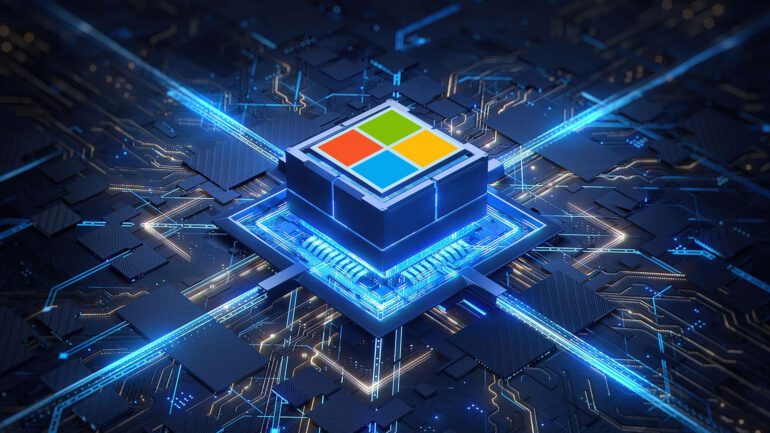TL;DR:
- Microsoft highlights GPUs as a crucial resource for its growing cloud business in its annual report.
- Demand for GPUs rises as top technology companies seek to provide AI capabilities to smaller businesses.
- Generative AI popularity surges, benefiting GPU manufacturers like Nvidia and AMD.
- Microsoft’s data centers heavily depend on GPUs, prompting the company to seek additional capacity.
- Collaboration with Nvidia-backed CoreWeave to secure more GPUs for data centers.
- Microsoft accelerates the deployment of its custom AI processor to reduce reliance on external GPU suppliers.
- An increase in capital expenditures is expected to accommodate data center and GPU needs.
Main AI News:
In the fast-paced realm of technology, Microsoft stands out as a prominent player, with its thriving cloud business garnering significant attention from investors. However, recent developments have brought to light a critical concern that could disrupt its services – the scarcity of AI chips for its data centers.
Graphics Processing Units (GPUs) have emerged as a fundamental raw material essential to Microsoft’s cloud business growth. The company’s annual report, released just days ago, now includes a risk factor highlighting potential outages that may arise from insufficient infrastructure. The demand for GPUs has skyrocketed, especially among top technology firms seeking to empower smaller enterprises with artificial intelligence capabilities.
Notably, generative AI has seen a tremendous surge in popularity, partly due to the success of OpenAI’s ChatGPT chatbot, which captivated audiences worldwide. This surge has significantly benefited GPU manufacturers like Nvidia and AMD, albeit to a lesser extent.
Microsoft’s data centers, the backbone of its cloud services, heavily rely on various crucial components, including GPUs. These centers are dependent on a stable supply of permitted and buildable land, predictable energy sources, and reliable networking supplies. The inclusion of GPUs as a crucial component underlines their indispensable role in the efficient functioning of Microsoft’s infrastructure.
Surprisingly, this is not the only mention of GPUs in the regulatory filing. There are two other instances highlighting the significance of GPUs for Microsoft’s operations. Such emphasis on GPUs sets Microsoft apart from its competitors like Alphabet, Apple, Amazon, and Meta, who have not explicitly addressed this issue in their recent annual reports.
The partnership with OpenAI is instrumental in Microsoft’s AI advancements, particularly with the popular ChatGPT. Microsoft’s Azure cloud plays a vital role in providing the necessary computational power for ChatGPT and various AI models. Furthermore, Microsoft has leveraged OpenAI’s models to enhance its existing products, such as Outlook, Word applications, and the Bing search engine, with generative AI capabilities.
The rising interest in ChatGPT has fueled an unexpected surge in demand for GPUs, prompting Microsoft to explore additional sources to meet their needs. Among these sources is a collaboration with Nvidia-backed CoreWeave, a provider of GPU rentals as a cloud service.
In response to the escalating demand, Microsoft has also accelerated the development and deployment of its custom AI processor. This strategic move aims to bolster the company’s capabilities and reduce reliance on external GPU suppliers.
The impact of these developments is evident, as Microsoft foresees a surge in capital expenditures to fund data centers, standard central processing units, networking hardware, and GPUs. Amy Hood, the company’s finance chief, stated that the increase in investment aims to accelerate overall capacity growth.
Conclusion:
Microsoft’s emphasis on GPUs as a critical component of its cloud business expansion underlines the increasing significance of AI capabilities in the technology market. The rising demand for GPUs not only impacts Microsoft’s data centers but also reflects the broader trend of AI adoption across industries. As AI continues to play a pivotal role in technological advancements, companies that can effectively secure GPU resources and develop custom AI solutions may gain a competitive edge in the market. The collaboration with CoreWeave and the accelerated deployment of Microsoft’s custom AI processor demonstrates the company’s strategic approach to address the GPU shortage challenge and capitalize on the growing demand for AI-powered solutions.

